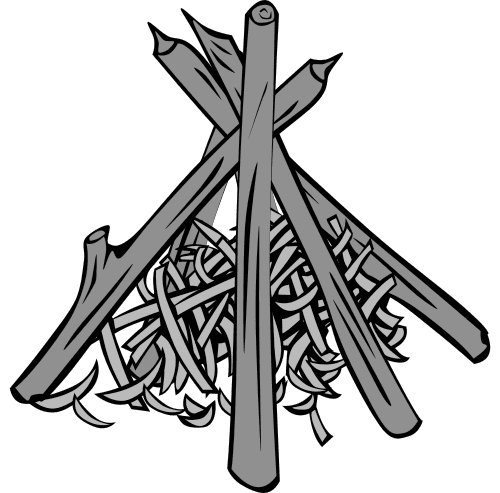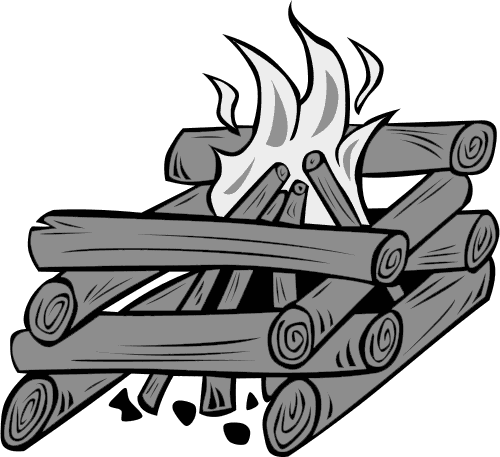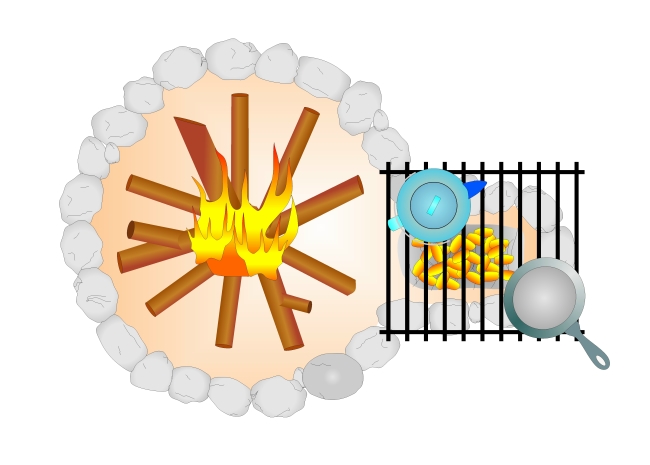Use the table below to determine what type of fire you need to cook your meal.
Types of Campfires
TEEPEE
This fire gives you a quick, hot fire for boiling in pots and frying in
pans. Build your foundation fire to resemble an Indian teepee. (Stand
the tinder up in teepee fashion. Next stand pieces of kindling on end
around the tinder – small ones first, then larger ones.) Pieces should
overlap somewhat, and be touching. Once the kindling is burning good,
begin adding fuel progressively using smaller to larger logs. Keep your
fuel building tall, not widespread.

CRISS CROSS OR LOG CABIN FIRE
Produces coals or a long-burning fire. It burns steadily, produces good
coals, and does not need much feeding. Start with the Basic A fire and
add wood in a criss-cross formation. Put thick sticks at bottom and
smaller ones across the top. In this way, the wood will burn and fall,
making a bed of coals. A log cabin is built by the same process, only
open in the center. These fires are good for ceremonial or camp fires.

USING A KEYHOLE
When lots of coals are needed, arrange your firebricks to resemble a
keyhole. Build your fire in a semi-circle and keep feeding it so flames
are present. Rake coals into the lower part to cook on.

Never even light your match without water nearby to put out a fire! And never leave a fire unattended!
When asking girls to gather wood, be specific about what sized and quantity you want them to gather.
Before getting started, tie longhair back and remove any clothing made of nylon. It all can catch fire so quickly!
Only those tending or building the fire should be around the fire ring.
Be sure not to pass things OVER the fire.
Be sure to use the three sizes of wood.
Tinder fires flame only shortly and are good for cooking nothing.
Make your fire only the size you need it to cook your meal.
Rotten wood, leaves, grass weeds and paper make lousy fire starters and don’t burn long enough to cook anything.
Never use liquid fire starters.
Check the area for overhanging branches, which may catch fire.
On a windy day build a fire only where it can be sheltered from spreading.
Remember that fires burn UP and fires need AIR. For example, a match to
light a fire should be placed beneath the tinder or fire starter then to
keep it going wood is places gently onto the flames pointing upward.
Once a flame begins it will go out if smothered from air. It may be
necessary to fan a fire to get it to ignite larger kindling or fuel.
Brainstorm some safety ideas with your girls before getting started. Ask them about how to act and work around the fire.
Always leave things nicer than when you found them!